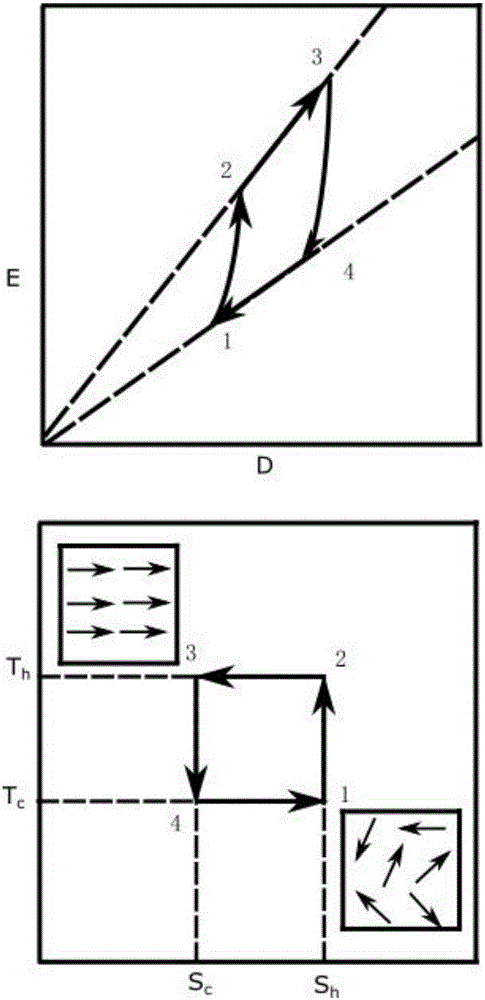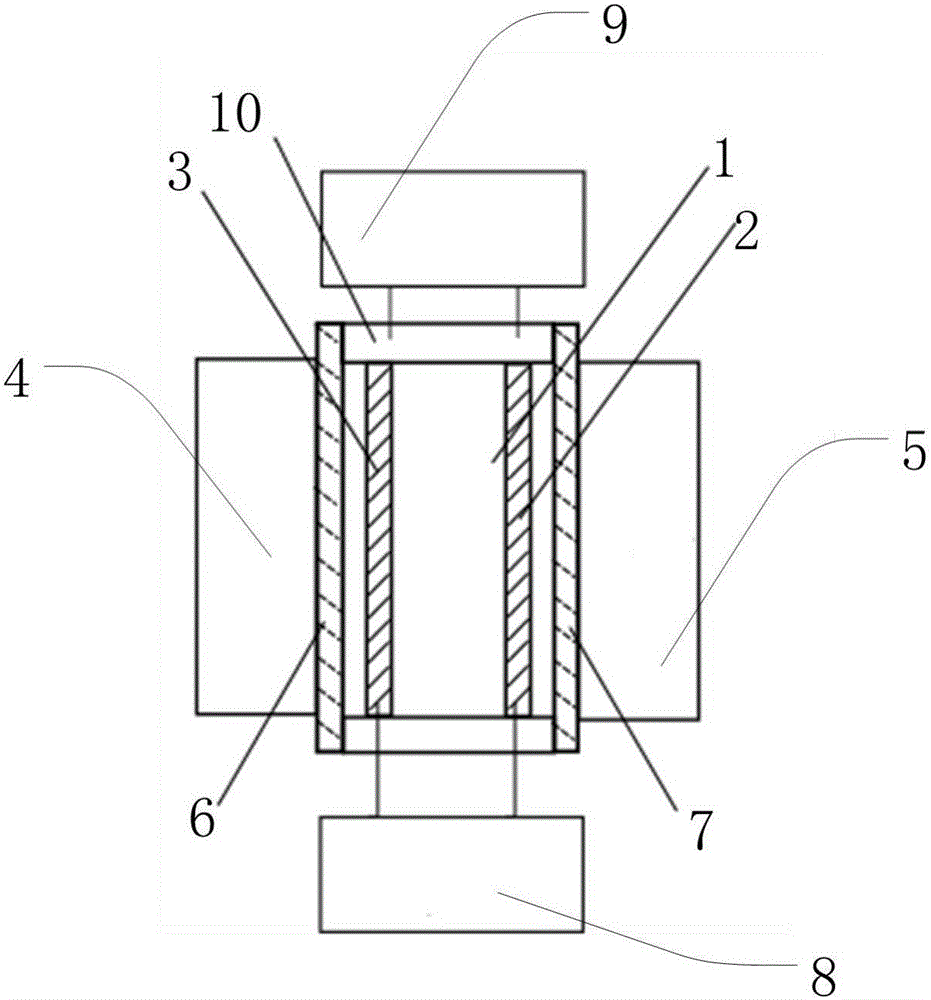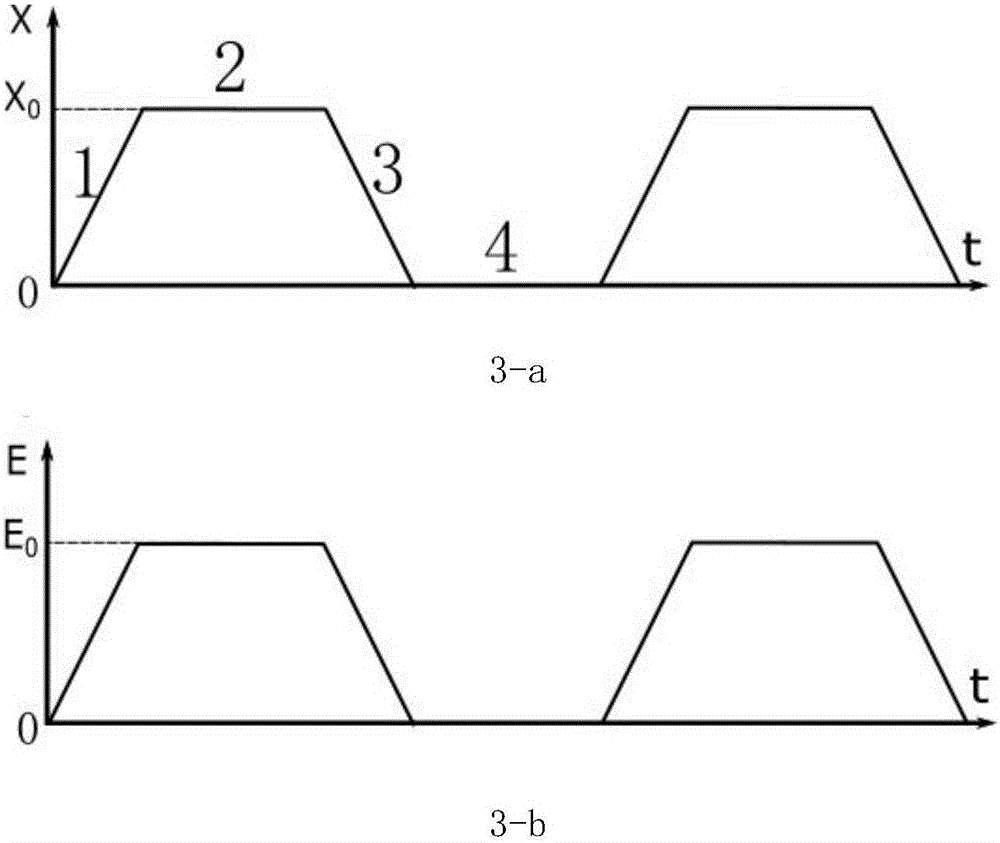Electrocaloric refrigerator
A technology of refrigerators and electric cards, applied in refrigerators, refrigeration and liquefaction, machines using electric/magnetic effects, etc., can solve problems such as no refrigeration methods are given.
- Summary
- Abstract
- Description
- Claims
- Application Information
AI Technical Summary
Problems solved by technology
Method used
Image
Examples
Embodiment Construction
[0024] The technical solutions in the present invention will be clearly and completely described below in conjunction with the drawings in the embodiments of the present invention. The described example is only one example of the invention, and not all possible implementations. Based on the same refrigeration principle, other design implementation examples all belong to the protection scope of the present invention.
[0025] figure 1 It is the schematic diagram of the refrigeration effect of the electric card. The electric card refrigeration cycle goes through four steps at a time: (1) Apply voltage to the electric card material without exchanging heat with the outside world, and the material system realizes the adiabatic heating process 1-2. Due to the electrocard effect, the material changes from state 1 (E 1 ,T c , S h ) to state 2 (E 2 ,T h , S h ). (2) The voltage continues to increase and the material and constant temperature environment (T h ) for heat exchang...
PUM
 Login to View More
Login to View More Abstract
Description
Claims
Application Information
 Login to View More
Login to View More - R&D
- Intellectual Property
- Life Sciences
- Materials
- Tech Scout
- Unparalleled Data Quality
- Higher Quality Content
- 60% Fewer Hallucinations
Browse by: Latest US Patents, China's latest patents, Technical Efficacy Thesaurus, Application Domain, Technology Topic, Popular Technical Reports.
© 2025 PatSnap. All rights reserved.Legal|Privacy policy|Modern Slavery Act Transparency Statement|Sitemap|About US| Contact US: help@patsnap.com



